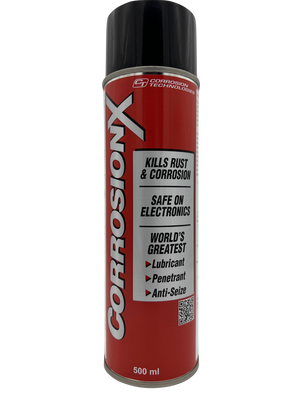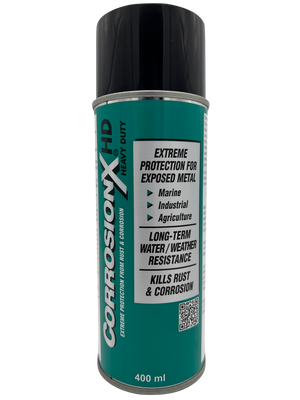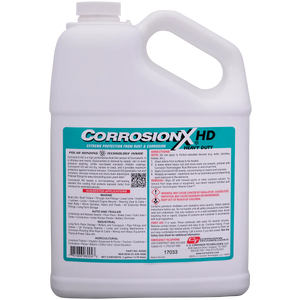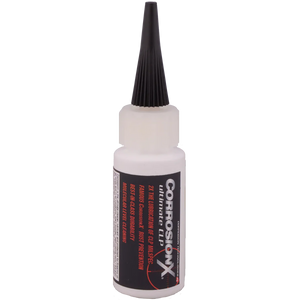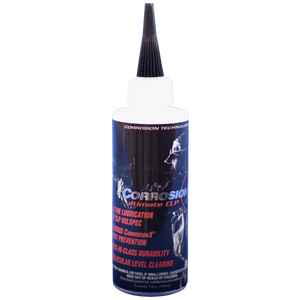The Anatomy of a Threat: Understanding the Science of Aviation Corrosion
Dissecting the Corrosion Process
To effectively fight aircraft corrosion, we must first understand what it is and how it happens. Corrosion in aircraft is essentially an electrochemical process where a metal reacts with its environment, leading to its degradation. In aviation, this process is often accelerated due to a combination of factors that make the environment particularly aggressive. Understanding this process on a scientific level helps us to understand how it can best be prevented.
At a fundamental level, corrosion occurs when an electrochemical cell is formed on a metal surface. This requires three key components: an anode (where oxidation occurs), a cathode (where reduction occurs), and an electrolyte (a medium that facilitates the flow of electrons). Water, especially when it contains salt or other contaminants, acts as an excellent electrolyte, which is why moisture exposure can so rapidly accelerate corrosion in aircraft.
Different metals have different electrochemical potentials, and when two different metals come into contact in the presence of an electrolyte, a galvanic cell is formed. This can cause one metal to corrode more rapidly while protecting the other. For instance, the aluminum alloys commonly used in aircraft are susceptible to this galvanic aircraft corrosion when they come into contact with other metals.
Factors That Exacerbate Corrosion in Aviation
The aviation sector faces a unique set of challenges that exacerbate the corrosion in aircraft process:
Extreme Temperature Variations: Aircraft experience rapid temperature changes as they ascend and descend, going from freezing temperatures at high altitudes to intense heat on the tarmac. These temperature changes cause expansion and contraction that can weaken protective layers and accelerate aircraft corrosion.
Exposure to Moisture: From humidity and rain to saltwater spray in coastal areas, aircraft are frequently exposed to moisture, which, as we know, is a major component of corrosion, acting as an electrolyte and speeding up the degradation process, which has a direct impact on corrosion in aircraft.
Atmospheric Pollutants: Aircraft can encounter various atmospheric pollutants, particularly in urban and industrial areas. These pollutants can further contribute to aircraft corrosion, as they introduce reactive chemicals and accelerate the electrochemical reactions.
Stress and Vibration: The constant stress and vibration that occur during flight can weaken protective coatings and create pathways for corrosion in aircraft to take hold, which is why having strong protection is so vital.
Microbial Activity: In certain conditions, bacteria can also contribute to aircraft corrosion, creating biofilms that accelerate the degradation of metals.
Strategies for Effective Aircraft Corrosion Management
A Multi-Layered Approach to Combatting Corrosion in Aircraft
Effective corrosion management in aviation requires a comprehensive, multi-layered approach:
Material Selection: The first step in corrosion management is to carefully select materials with inherent corrosion resistance, such as certain stainless steels, titanium alloys, or specialized aluminum alloys. These materials can reduce, but not eliminate, the potential for aircraft corrosion.
Protective Coatings: Applying protective coatings to metal surfaces is essential to prevent corrosion in aircraft . These coatings form a barrier between the metal and its environment, helping to exclude moisture and other contaminants. There are many types of protective coating that can be used, including paints, lacquers, and conversion coatings, each offering varying degrees of protection depending on the specific conditions.
Regular Inspections: Regular and detailed visual inspections are critical for detecting any early signs of aircraft corrosion, allowing for timely intervention. These should be a key component of any maintenance plan.
Effective Cleaning: Proper cleaning is key to corrosion in aircraft prevention. This removes dirt, grease, and other contaminants that can trap moisture or act as corrosive agents. Effective cleaning can involve a range of processes, from simple washing to more complex chemical treatments.
Environmental Controls: Controlling the environment in which aircraft are stored, especially when not in use, can significantly impact the aircraft corrosion process. This involves reducing humidity, controlling temperatures, and minimizing exposure to pollutants.
The Role of Advanced Lubricants and Preventatives in Protecting Aircraft
In addition to the strategies described above, specialized lubricants and rust preventatives play a crucial role in corrosion in aircraft management. These advanced formulations are engineered to offer more than just lubrication; they provide protection at a molecular level:
Corrosion Inhibitors: These formulations neutralize the chemical reactions that lead to aircraft corrosion by creating a barrier that prevents moisture and other corrosive elements from reaching metal surfaces.
Temperature Stability: As discussed earlier, aircraft parts are subjected to extreme temperatures, therefore advanced lubricants are needed that can withstand both high and low temperatures, maintaining their viscosity and performance in all circumstances, and preventing corrosion.
Penetrating Protection: It’s essential to select lubricants that can penetrate tight spaces and between moving parts, ensuring that all areas are protected from corrosion in aircraft and friction. This is vital to ensure that every component of an aircraft functions optimally.
Displacement of Moisture: Any product that can help to displace moisture will be advantageous, as it reduces the impact of moisture on the metal and can prevent existing aircraft corrosion from worsening.
Integrating Advanced Solutions: A Strategic Imperative in Fighting Aircraft Corrosion
Given the complexities of corrosion in aircraft , and the level of safety that is required, relying solely on basic approaches to corrosion management is inadequate. Advanced solutions must be fully integrated into all aspects of aircraft design, maintenance, and operation. This strategic approach involves:
Proactive Maintenance Schedules: Regular and comprehensive inspections should be scheduled based on the specific operating conditions of the aircraft, including its flight hours and the environments that it operates in. Such proactive maintenance schedules are vital to protecting against corrosion in aircraft.
Specialized Product Application: The correct application of specialized lubricants and rust preventatives, such as those that feature polar bonding technology, is vital in ensuring all areas are adequately protected and preventing aircraft corrosion. This includes making sure that all instructions are followed carefully and that reapplication schedules are properly adhered to.
Continuous Improvement: Regularly assessing existing corrosion in aircraft management strategies allows for the identification of any deficiencies and the implementation of improvements. This is an ongoing process where small adjustments over time can make a big difference to safety and maintenance efficiency.
Technological Innovation: Investing in the research and development of new, advanced materials and corrosion prevention technologies is key to maintaining the safety of aircraft. This should include investigating how different materials perform, and how different application techniques can improve outcomes, all in the pursuit of a better understanding of how to protect against aircraft corrosion .
A Practical Perspective: CorrosionX Aviation
As the authorized importer and representative of CorrosionX products in Finland, I understand the importance of utilizing solutions that meet the demanding requirements of the aviation industry and how important it is to protect against aircraft corrosion. While the product features polar bonding technology that forms a tenacious molecular bond on metal surfaces, offers a complete solution to aviation corrosion management. Its comprehensive approach helps to prevent corrosion in aircraft, reduce friction, and protect against moisture, all in one formula. It can be used across many different components of an aircraft, making it a truly versatile and effective solution for protecting against corrosion in aircraft.
The use of CorrosionX Aviation offers many benefits, which when considered in the context of a comprehensive approach to corrosion in aircraft management, help to deliver optimal performance and ensure the safety of aircraft. This highlights the importance of having a deeper understanding of the science behind aircraft corrosion and the importance of using a range of specialized solutions to combat this constant and significant threat.
The Path Forward: Commitment to Innovation and Safety
The fight against aircraft corrosion in aviation is an ongoing endeavor, and it is a battle that requires constant research and improvement. The scientific understanding of how corrosion in aircraft works is constantly evolving, and with it, we are always developing new solutions for fighting this relentless enemy. The future of aviation corrosion management relies on a dedication to innovation, the consistent application of best practices, and an ongoing commitment to safety, to ensure we have the best products and practices in place to protect aircraft.
By combining a scientific approach with advanced solutions, like CorrosionX Aviation, we can ensure that the aircraft of today, and of tomorrow, can continue to soar safely through the skies, and that we are always working to reduce the incidence of aircraft corrosion.
FAQs on Aviation Corrosion Management
Q: What is the primary cause of corrosion in aircraft? A: Corrosion is caused by the interaction of metal surfaces with environmental factors like moisture, salt, pollutants, and temperature changes. This electrochemical reaction leads to metal degradation.
Q: How often should aircraft undergo corrosion inspections? A: Inspection frequency depends on the aircraft’s operating conditions and manufacturer recommendations. Generally, regular visual inspections should be integrated into routine maintenance schedules.
Q: Can CorrosionX be used on all aircraft parts? A: Yes, CorrosionX Aviation is versatile and suitable for various components, from external surfaces to tight spaces in moving parts, ensuring comprehensive protection.
Q: Why is moisture displacement important in corrosion prevention? A: Moisture accelerates the electrochemical reactions that cause corrosion. Products that displace moisture reduce its impact and help prevent further degradation.
For more information or to explore CorrosionX products, contact us today !



